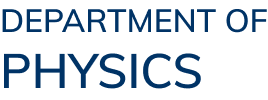Abstract
The advent of moiré quantum matter, epitomized by magic-angle twisted bilayer graphene (MATBG), has unveiled a rich landscape of topological and correlated phases. However, the theoretical understanding of these systems and the exploration of moiré physics remain fundamental challenges. This thesis presents a series of theoretical studies that address these challenges, bridging the realms of moiré electronics, lattice dynamics, and light-matter interactions.
We begin by reformulating the heavy-fermion representation for MATBG, mapping its low-energy electrons to a hybrid system of localized and itinerant orbitals. The localized orbitals are analytically identified as zeroth pseudo-Landau levels, while the itinerant ones are constructed as orthogonalized plane waves. This framework, developed in parallel with Song and Bernevig’s topological heavy fermion model, naturally resolves the experimental dichotomy between localized and itinerant behaviors. It thereby provides an efficient platform for analyzing correlated states and paves the way for further studies of correlation effects in this system.
Inspired by this picture, we establish a general projection theory to demystify the electronphonon coupling in MATBG. This approach singles out a select group of active moiré phonons that couple strongly to the flat bands, leading to an effective moiré-scale Holstein model. We demonstrate that the phonon-mediated attraction fundamentally reshapes the correlated phase diagram, stabilizing time-reversal-symmetric orders that align with experimental observations of Kekulé patterns.
We further transcend the electronic domain by proposing the new concept of moiré phonon polaritons. We demonstrate that in twisted ionic crystals like hexagonal boron nitride, the moiré superlattice reconstructs the phonon polariton spectrum, giving rise to spatially inhomogeneous, multi-wavelength hybrid light-matter waves, thereby creating a novel platform for tunable nanophotonics.
Finally, we lay the groundwork for a microscopic theory of the intrinsic phonon thermal Hall effect, deriving an effective phonon action from electron-phonon couplings to explore the origin of transverse heat transport in non-magnetic insulators.
